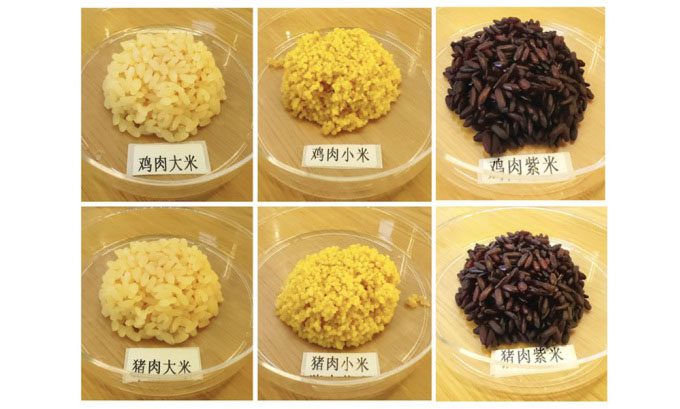By combining cultured meat and rice, scientists have developed new, nutritious foods that, when cooked, possess the aroma of both rice and meat.
The China Comprehensive Meat Food Research Center and the Beijing Academy of Food Sciences have made significant strides in the food industry with the development of chicken meat rice and pork meat rice, according to China Daily on June 25. Specifically, pork and chicken muscle cells are directly cultured on rice and other crops.

Chinese scientists develop pork meat rice and chicken meat rice. (Photo: China Daily).
“These foods look like regular rice – white, brown, or purple. But once cooked, they will have the aroma of both rice and meat,” explained Wang Shouwei, the lead scientist on the project.
In addition to flavor, this new technology also offers intriguing nutritional possibilities. “We can precisely control the levels of protein, amino acids, fiber, carbohydrates, and other nutrients. This allows us to tailor the food to specific dietary needs,” Wang added.
The key aspect of this new technology is using rice as a microbial scaffold. Previously, the production of cultured meat relied on expensive synthetic scaffolds. “These often raised food safety concerns and increased production costs. In contrast, rice provides a natural, edible alternative that is rich in fiber and other beneficial nutrients,” Wang shared.
The production process involves pre-treating rice varieties to create a suitable environment for cell growth. For instance, pork meat rice is produced by separately culturing batches of pork muscle and fat cells on genetically modified rice grains. They are then combined to create the final product.
Professor Zhou Jingwen from Jiangnan University believes this is a remarkable leap forward. “Chicken meat rice and pork meat rice open new frontiers in the field of cell-cultured meat, and China aims to lead in this area,” he stated. The research team is optimistic about the prospects for mass production of these new rice varieties in the near future.
Bodybuilding trainer Yao Xiangwei is intrigued by this prospect. “High protein content, plenty of fiber, and healthy carbohydrates – it sounds perfect for someone like me. Price will be a concern, but I will definitely give it a try,” he said.
However, Yao also believes that public acceptance of these new foods is crucial. “With a new product, people may be curious but still cautious. It might take some time for these cultured foods to become popular,” he noted.


















































